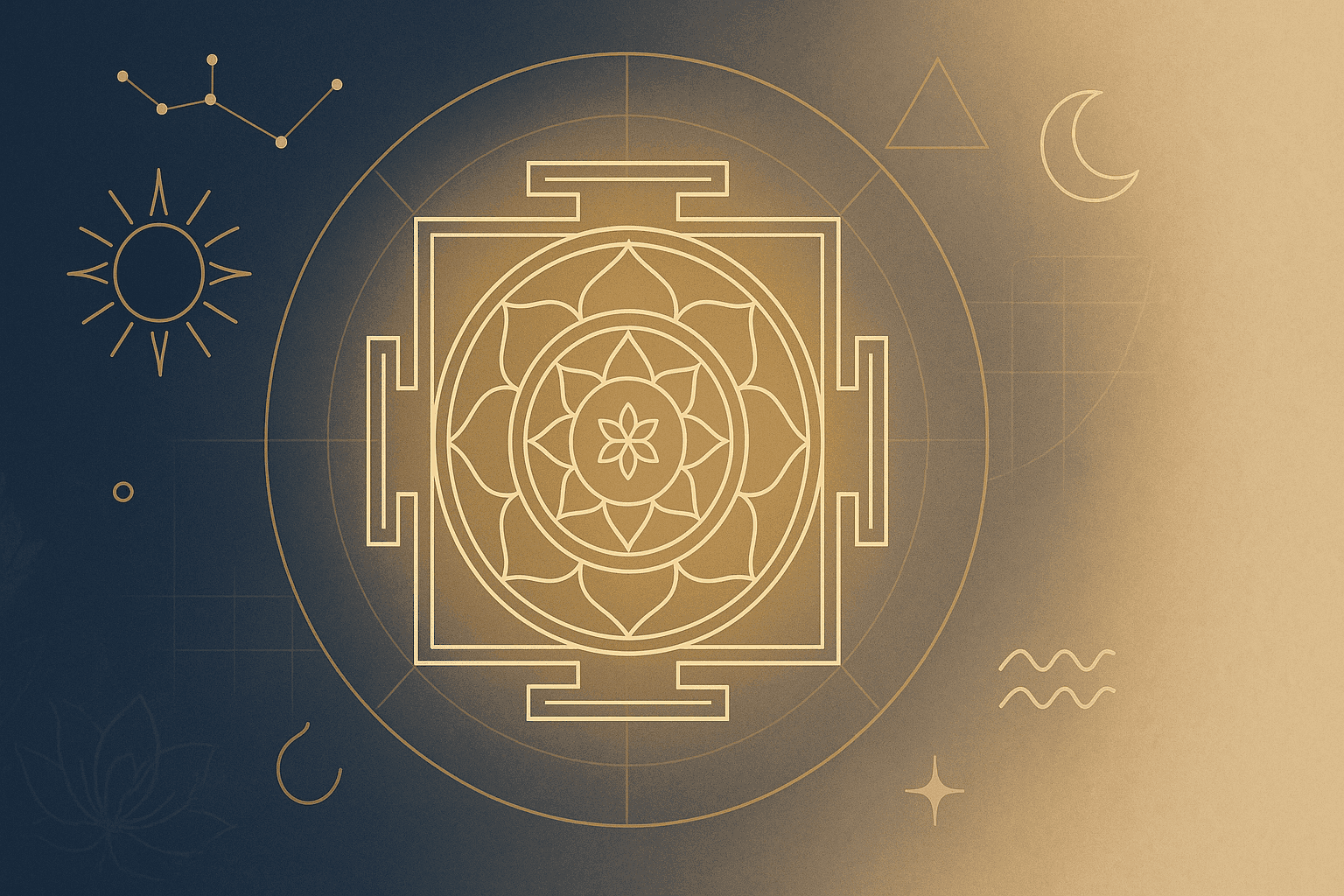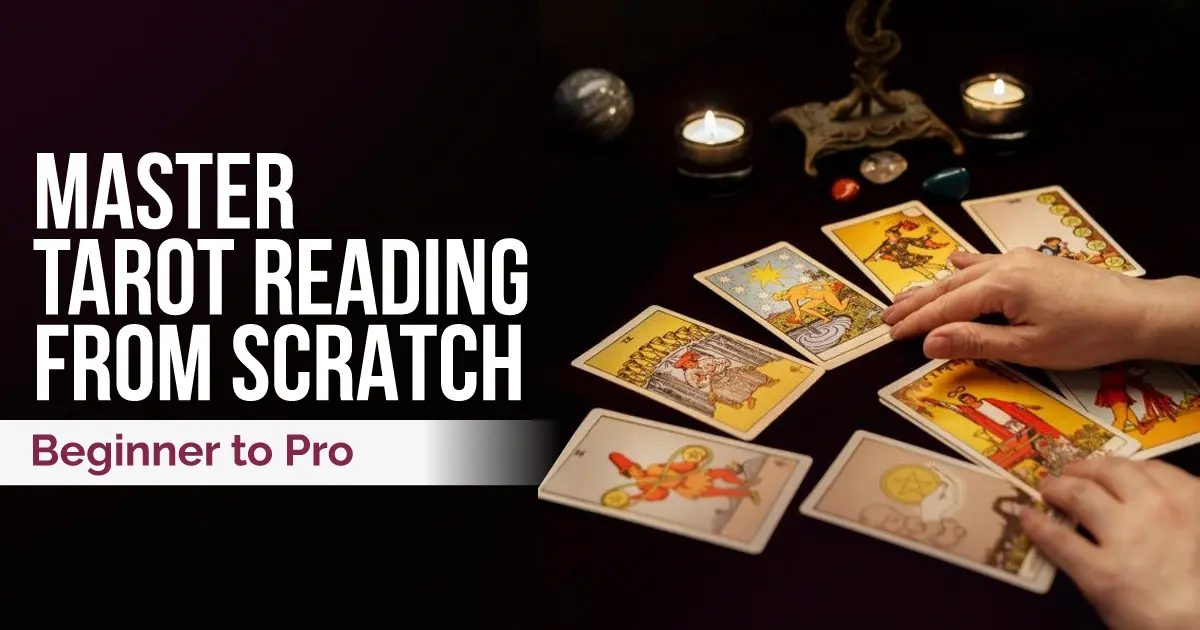How to Learn Tarot Card Reading – A Beginner’s Guide to Mastering the Cards
By Aashish Patidar May 26 2025
Are you drawn to the mystical world of tarot cards and wondering how to learn tarot card reading? Whether you’re seeking answers for yourself or looking to help others, learning tarot can be a powerful and transformative experience. From understanding ancient symbolism to building intuition, tarot empowers you to gain deeper insights into life’s most pressing questions.
In India, interest in tarot reading has grown tremendously over the years. Thanks to platforms like the Institute of Vedic Astrology, anyone can now master the art of tarot from the comfort of their home. With proper guidance and regular practice, even beginners can become confident readers. Let’s explore the complete path to learning tarot card reading from scratch.
What is Tarot and Why is It Important?
Tarot is a form of divination that uses a deck of 78 cards to uncover insights about the past, present, and future. Each card holds unique symbolism and energy that connects with your subconscious. The tarot deck is divided into two parts:
- Major Arcana (22 cards): Represent life’s major spiritual and karmic lessons.
- Minor Arcana (56 cards): Represent day-to-day events, thoughts, and emotions.
Used wisely, tarot becomes a trusted tool for guidance, reflection, and even healing.
Choosing the Right Tarot Deck
If you’re just beginning your tarot journey, selecting the right deck is essential. The Rider-Waite deck is highly recommended for beginners because of its detailed imagery and widespread resources for learning. Other popular options include the Thoth Tarot and Osho Zen Tarot, each with its own philosophy and symbolism.
When choosing a deck, go for one that intuitively feels right to you. You can purchase tarot decks online or from metaphysical stores in India. Always cleanse and charge your deck before use to align it with your energy.
Understanding Tarot Card Meanings
One of the first steps in learning tarot is familiarising yourself with the meanings of all 78 cards.
- Major Arcana: Cards like The Fool, The Lovers, and The World symbolise deep life themes.
- Minor Arcana: Divided into four suits—Cups (emotions), Wands (action), Swords (thoughts), and Pentacles (material world).
Each card can appear upright or reversed, and its meaning will vary accordingly. Start by learning keywords associated with each card and gradually develop your own intuitive interpretations.
Practicing Tarot Reading – Step by Step
Now that you’ve familiarised yourself with the tarot deck and its meanings, it’s time to put that knowledge into practice. Tarot is not just about theory—it’s about building a personal relationship with the cards. The more you engage with your deck, the more fluent you become in its language. Here's a practical, step-by-step guide to practising tarot reading effectively.
Step 1: Cleanse and Connect with Your Deck
Before you begin reading, it’s essential to cleanse your tarot deck to remove any residual energy, especially if it’s brand new or has been touched by others.
- Use incense like sandalwood or sage, or simply knock three times on the deck.
- Set an intention such as: “Let this deck bring clarity and guidance.”
- Spend a few moments shuffling the cards while focusing on your energy.
This ritual helps align the deck with your vibration, making your readings more accurate and personal.
Step 2: Begin with Daily One-Card Draws
As a beginner, start small. The most effective practice is the daily card pull:
- Each morning, shuffle the deck and ask, “What do I need to know today?”
- Draw one card and note its symbolism and your interpretation.
- At the end of the day, reflect on how that card related to your experiences.
Over time, this simple ritual sharpens your memory, strengthens your intuition, and deepens your understanding of card meanings in real-life situations.
Pro Tip: Maintain a “Tarot Diary” to track these daily insights. You’ll be surprised by the patterns and connections you discover.
Step 3: Learn and Practice Tarot Spreads
Once you're confident with single-card readings, explore basic tarot spreads to gain more layered insights.
1. Three-Card Spread
Ideal for beginners, this spread answers almost any question. Each card represents:
- Past – What events have shaped the situation?
- Present – What is happening right now?
- Future – What outcome or direction is emerging?
You can customise this format to other themes like: Situation – Challenge – Advice, or Mind – Body – Spirit.
2. Five-Card Spread
Adds more depth and can cover aspects like opportunities, hidden influences, or guidance.
3. Celtic Cross Spread (Intermediate)
A 10-card spread often used by professionals. It provides a comprehensive analysis of a person’s life, situation, and spiritual path.
As you advance, you can even create your own unique spreads depending on the type of reading required—career, relationships, finance, or health.
Step 4: Focus on Your Question and Set Intention
Tarot responds best to clear and focused questions. Before pulling cards, take a deep breath and centre your mind.
- Ask open-ended questions like:
“What should I be aware of in my career right now?”
“How can I improve my relationship with my partner?”
Avoid yes/no questions initially, as they require more nuanced reading.
Setting a clear intention grounds the session and helps the cards deliver relevant guidance.
Step 5: Interpret the Cards Intuitively
While it’s helpful to memorise traditional card meanings, true tarot mastery lies in intuitive interpretation. Pay attention to:
- The card’s imagery – What stands out?
- Your first emotional reaction – Calm, excited, anxious?
- How the cards interact – Do they support or contradict each other?
With practice, you’ll begin to notice symbolic patterns, repeated messages, and even receive intuitive downloads during readings.
Remember, tarot is not about “right or wrong” answers. It’s about understanding possibilities and gaining clarity.
Step 6: Read for Friends and Family (With Consent)
Once you’ve done self-readings for a few weeks, offer to read for close friends or family members.
- Start with simple spreads and ask them for feedback.
- Don’t try to be 100% accurate—focus on guiding, not predicting.
- Keep sessions light, respectful, and always maintain confidentiality.
Reading for others helps you build confidence and exposes you to diverse energies and questions.
Step 7: Record and Reflect
Consistent journaling is crucial for growth. After each reading, jot down:
- The question asked
- Cards pulled and your interpretation
- Any feedback or reflection
Over time, your notes will become a valuable resource and show you how much your understanding has evolved.
Common Mistakes Beginners Make
As with any new skill, there are a few pitfalls to watch out for when learning tarot:
- Memorising meanings blindly: Focus on intuitive understanding instead.
- Over-relying on guidebooks: Let your connection with the card guide you.
- Reading when emotionally unstable: Always read with a calm and focused mind.
- Skipping card reversals: Learning upright and reversed meanings adds depth to your readings.
With patience and practice, these mistakes become learning opportunities.
Advance Your Learning with a Certified Tarot Course
While self-learning is rewarding, enrolling in a professional course can fast-track your growth. The Institute of Vedic Astrology (IVA) offers one of India’s most popular online tarot reading courses.
Course Highlights:
- Step-by-step training on all 78 tarot cards
- Video lectures, e-books, and practice exercises
- Certificate of completion, adding credibility to your profile
- Lifetime access to course materials
IVA’s structured curriculum helps you transition from casual learner to confident reader, and even explore tarot reading as a career or side business.
Final Thoughts
Understanding how to learn tarot card reading is more than just memorising card meanings—it’s about building intuition, connecting with spiritual energies, and offering clarity to yourself and others. Whether you're seeking personal transformation or considering a career in divination, tarot is a powerful companion on your journey.
If you’re serious about mastering tarot reading in a structured, professional way, the Institute of Vedic Astrology offers the perfect platform. With flexible online learning, expert mentors, and recognised certification, you’ll be well on your way to becoming a confident tarot reader.
Now is the perfect time to shuffle the deck and take the first step. Happy reading!
FAQs
1.How long does it take to learn tarot reading?
Ans: With consistent practice, you can become comfortable in 3 to 6 months. Certification may take longer.
2.Can I learn tarot card reading online?
Ans: Yes. IVA’s online course is perfect for Indian students with flexible timing and expert guidance.
3.Do I need a certificate to become a tarot reader?
Ans: While certification isn't mandatory, it adds professionalism and builds client trust—especially if you're offering paid readings.
4.Is tarot reading a viable career in India?
Ans: Yes, many people in India are now offering tarot readings professionally through social media, YouTube, and counselling services.
Search
Recent Post
-
Kaal sarp dosh in astrology – meaning, effects, remedies & solutions
 Astrology has always been a guiding light for peop...Read more
Astrology has always been a guiding light for peop...Read more -
Vastu tips for home construction – a complete guide for a harmonious home
 Building a home is one of the most significant mil...Read more
Building a home is one of the most significant mil...Read more -
10 proven vastu remedies for health problems: a vedic vastu guide to wellness
 Are you struggling with constant fatigue, sleeples...Read more
Are you struggling with constant fatigue, sleeples...Read more -
2nd house in astrology: wealth, family & value systems
 In Vedic astrology, the 2nd House in astrology is ...Read more
In Vedic astrology, the 2nd House in astrology is ...Read more -
Types of dasha in astrology: decode life’s timelines with vedic wisdom
 In Vedic astrology, timing is everything. While yo...Read more
In Vedic astrology, timing is everything. While yo...Read more

